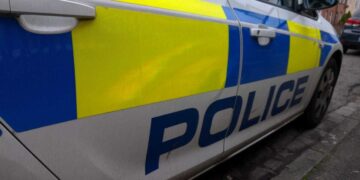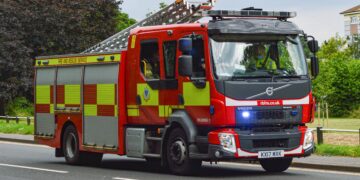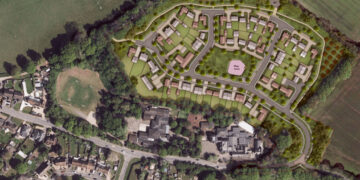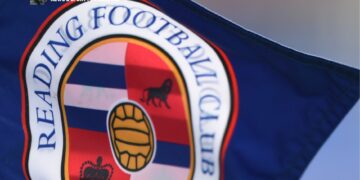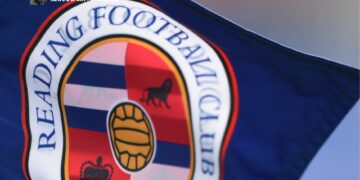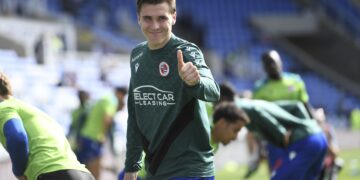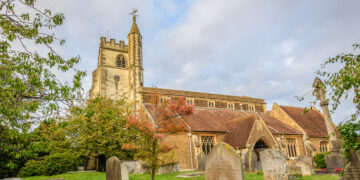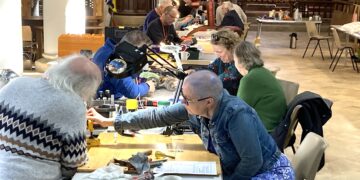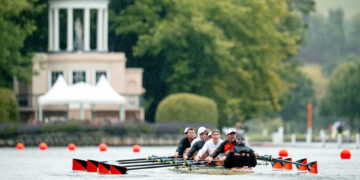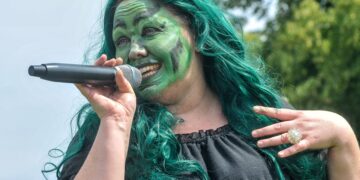IN 1944 Pat Firth’s father Major Ezra Rhodes fought in the battle of Kohima, an important turning point in the Burma Campaign of World War II, when British and Indian forces successfully defended Kohima and halted the Japanese advance into India.
In February this year, Pat fulfilled a dream to visit the spot where her father had served.
She shares her father’s WWII story with Wokingham.Today.
“Visiting the place where Dad served was a very emotional experience that I’ll treasure forever,” she said.

Ezra and his twin sister were born in 1912, numbers five and six of 10 children.
The family lived in a small two bedroom terraced house on a cobbled Sheffield street.
“There was no motorised traffic then, only horses and carts,” said Pat.
“Dad remembered WWI air-raids in the city, and soldiers returning from France in 1918 just before his sixth birthday.”
To help support the family, six year old Ezra sold newspapers, then spent three years peeling potatoes in a fish and chip shop.
Aged 14 in 1926 (the year of the General Strike), he left school.
“Work was impossible to find, but eventually Dad became a furnace lad in a factory making horse shoes,” Pat said.
“He loved to visit the rural countryside by bike or on foot – it was a passion that never left him.”
Aged 17, weighing eight stones, and five feet eight tall, Ezra tried to join the army.
“He was told to go home and eat dumplings to put on weight,” Pat said.
But he was accepted by the King’s Own Yorkshire Light Infantry, earning 14 shillings weekly (with half deducted by the army for his keep).
Ezra was quite quickly promoted, and in 1934 met Pat’s mother Ivy.
The couple married in 1939, but before they could celebrate their honeymoon Ezra was sent to France.
In 1940 he was commissioned as an officer, graduating from Sandhurst as a Lieutenant.
And in 1942 he moved to Bombay for intensive training as tank commander and Major in command of ‘B’ Squadron.
The following year the British army received US tanks named after American Civil War generals; Lee, Sherman, and Grant (Grant was Ezra’s tank).
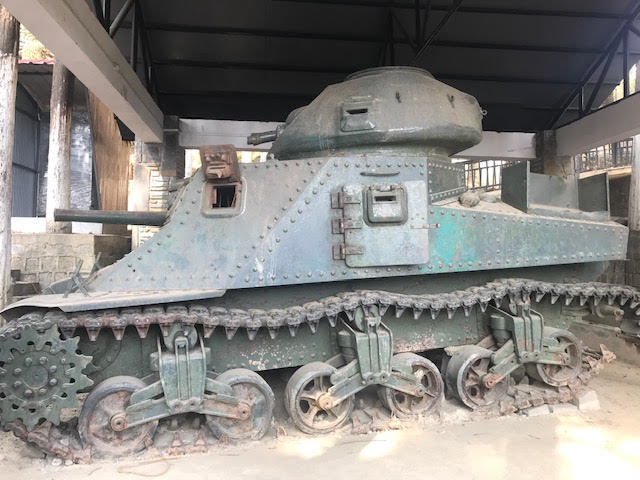
The Japanese had, by now, besieged the capital city Manipur, and were aiming for Dimapur in Nagaland, gateway to India.
The squadron’s mission was to repel them from Kohima, with help from the Chindits (British Empire troops known for their excellence in jungle warfare).
Travelling was hazardous (tanks were wider than the tracks they followed, and crossing the Brahmaputra river was perilous) but the unit pushed on.
Kohima was (and still is) a series of jungle covered hills, including; Jail Hill, Crooked Picket, DC Bungalow and Naga village.
The Japanese occupied them all, controlling movement in and around Kohima from a track between DC Bungalow and Naga village.
On May 4 and 5, 1944, Ezra’s squadron was ordered to assist Dorset Regiment, then clinging to positions at DC Bungalow and Crooked Picket.
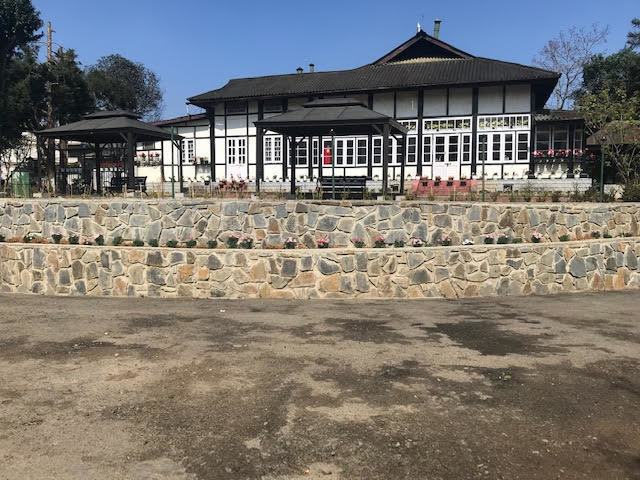
“Just 10 yards from the Japanese they employed heavy guns; solid shells, then high explosives,” said Pat.
Later that day they were sent to position a tank between Crooked Pitch and DC Bungalow, but the treacherous terrain caused it to descend out of control.
To cover their rapid withdrawal, the squadron fixed small arms guns to the tank’s revolving turret.
“By rotating and constantly firing, they managed to escape,” said Pat.
“But when Dad took off his helmet he discovered a bullet had passed through it, smashing the plastic lining and scraping the back of his head – it was a narrow escape.”
The battle of Kohima was hard and bitter, only ending on June 22.
“My father said he fought alongside the finest men he’d ever known,” said Pat.
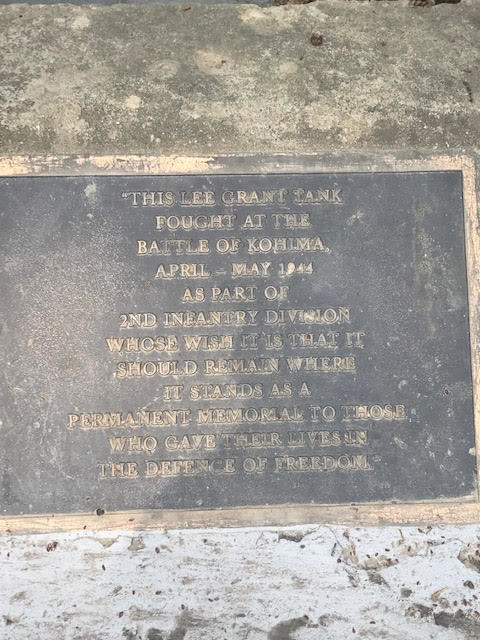
But in June 1944, with Europe liberated, British troops began returning home.
“Dad celebrated VE Day in hospital where he was being treated for fever,” Pat said.
But in July 1945 Ezra arrived at Liverpool docks.
“Dad was keen to get home,” said Pat.
“He had a first class train ticket to London, but with no seats available, like many others he travelled in the luggage wagon.”
At Euston station, after nearly four years apart, Ezra and Ivy were joyfully reunited with each other and with their families.
In 1948 Pat was born, but Ezra, serving in Nigeria, didn’t meet her until she was 10 months old.
The family spent time in Carlisle, then Chester where Ezra cycled to work every day – Pat remembers riding on the crossbar of his bike.
Then they moved to Germany, where Pat first attended school, and in 1954 her brother Ezra was born on their return to the UK.
“Dad was serving in the Korean War,” Pat said, “and oh hearing the news threw his hat into the air for joy.
“It was kicked into oblivion, never to be found.”
After a period in Warminster the family moved to Arborfield Garrison, where Ezra was Adjutant at the Army Apprentice College.
They finally had their own home in Sindlesham, moving in the day President John F Kennedy was shot.
“Dad thought he would be recalled into active service again,” said Pat.
But the crisis subsided, and Ezra worked as project laison officer, responsible for much of the redevelopment of Arborfield Garrison and its church.
In retirement, Ezra and Ivy supported charities, including the Soldiers’, Sailors’ & Airmen’s Families Association.
Now passed on, their ashes are buried together in St Bartholomew’s Church, Arborfield.
“Dad never forgot his humble origins, nor his family,” said Pat.
“He was well respected by family, friends,comrades and colleagues.”
“I miss both my amazing parents very much and I’m immensely proud to be their daughter.”


